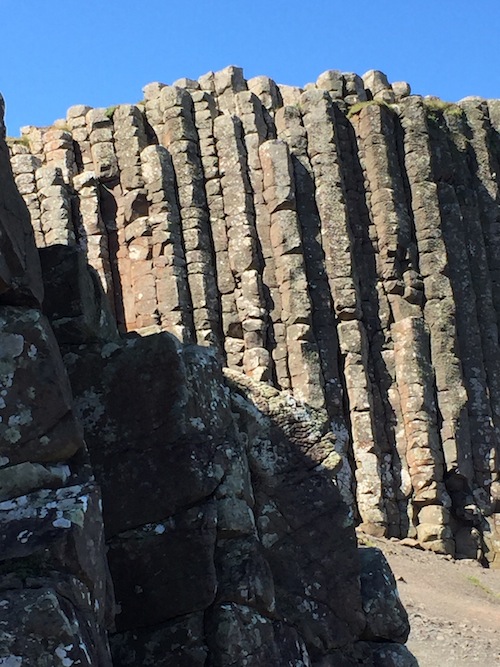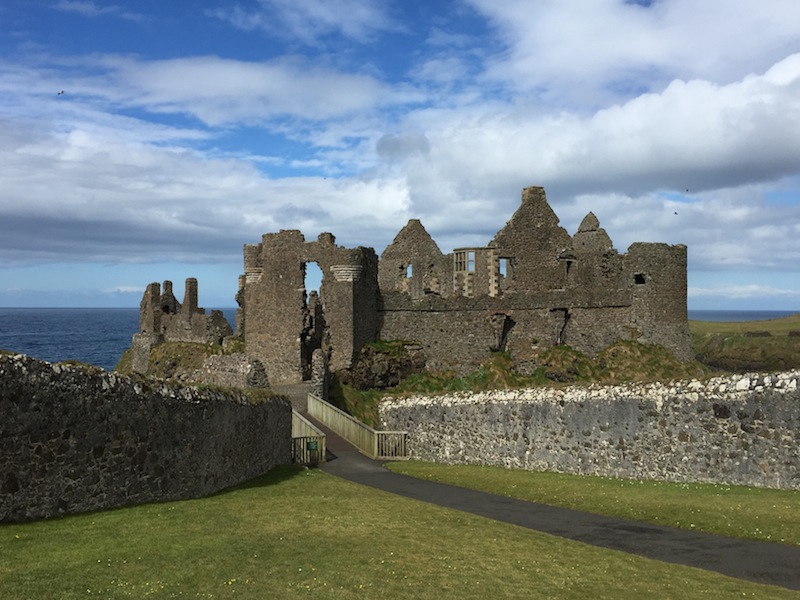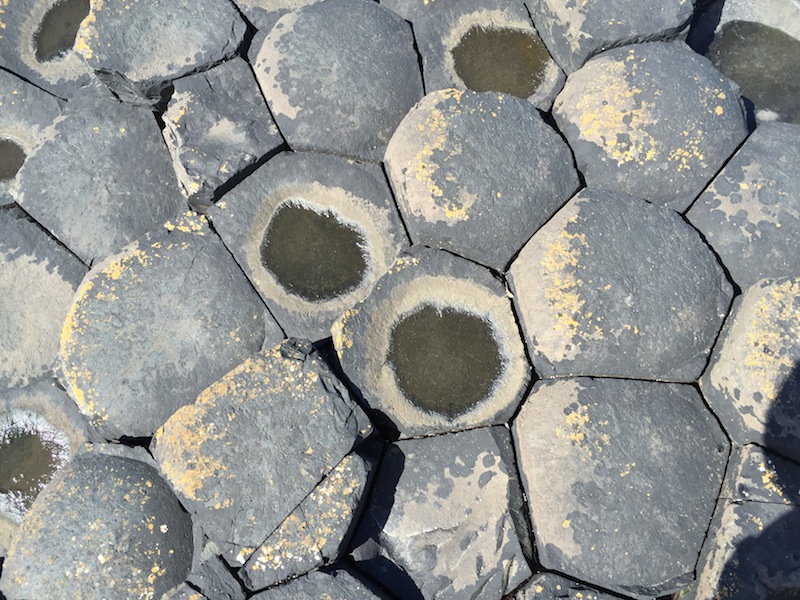If there’s one thing I’ll remember about Northern Ireland, it’s that this relatively small part of the UK has such a variety of landscapes. The coast of County Antrim is one of the best and its star attraction is the Giant’s Causeway.
Driving to giant Finn MacCool’s legendary domain on a warm, sunny day in late April, we witnessed the vast expanse of Lough Neagh, green fields, rolling hills, woodlands and the stark, heather-clad slopes of the Sperrin Mountains, which reminded me so much of the Cairngorms in Scotland. And that was before we’d even made it to the coast. It was like a greatest hits of landscapes packed into little more than an hour.
I could’ve happily stopped for a hike in the Sperrins but it was at the Giant’s Causeway, just outside the whiskey-distilling town of Bushmills, that we parked up for the day. Famous for its basalt, hexagonal pillars, the result of ancient volcanic activity, the causeway is under the protection of the National Trust these days, which means high admission fees, a shop that sells twee stuff that people of a certain age can’t resist and a cafe with tea, cake, scones and irresistible clotted cream.

While we could walk to the causeway – a UNESCO World Heritage Site – for free, we chose to pay to go through the visitor centre, which has an OK exhibition telling the story of the site, as well as the people who’ve made a living from it over time. The recently built centre is an impressive sight in itself, nestling in the landscape and composed of black basalt columns that mirror the causeway.
We took the Blue Walk down to the shore, skirting bays peppered with little islets, grassy hills and headlands. There wasn’t much sand for sunbathers at Porntaboe or Port Ganny, the beaches being littered instead with black rocks of all shapes and sizes. The cliffs showed obvious signs of erosion and some giant boulders perched precariously above us, defying gravity.
The 60 million-year-old causeway is a wonderful sight and it was here that MacCool defended Ireland from the assault of the Scottish giant Benandonner, or so the legend goes. We clambered over the thousands of basalt pillars and chimneys thrusting into the well-behaved Atlantic, admiring the symmetry along with tourists from the four corners of the world.

It wasn’t just the shapes that are so fascinating but also the colours of the rocks, which range from browns to greys to black. Some of the pillars have concave tops, filled with little pools of sea water, while others are convex – proof that the pillars are made up of segments with ball and socket joints.
Graham and I left my folks to have a rest in the bay named Port Noffer, where they could visit MacCool’s stone boot, and went on a walk up the cliffs to the feature called The Organ, which is composed of yet more basalt pillars. We continued on to the headland ahead of Port Reostan, where we got a close-up view of a couple of pillars called the Chimney Stacks. These have been heavily eroded over the years and looked ready to tumble into the sea below. And up there, as elsewhere along the cliffs, the soil and rocks occasionally shifted from brown and grey to deep red and orange hues.

We clambered down, met up with the folks and walked up to the visitor centre for lunch. The plan was to drive over to Portrush for a look at the town but when we came across the romantic ruins of Dunluce Castle clinging to a headland just a mile or so down the road, we changed our minds. There’s been a castle on the site since at least the 16th century and it was seized in the 1550s by the MacDonnell, who held it despite intrigue and rebellion and still do to this day.
A small town grew up outside the castle walls in the early 17th century but there’s little left of it now as it was abandoned when the family gave up Dunluce later in the century for homes less exposed to the extreme weather of the coast in winter and the ever-present threat of erosion. I can imagine it would’ve been a bleak place in howling gales and downpours, although it looked superb with the blue sky for a backdrop.

We roamed through ruined rooms, climbed the towers, noticed fireplaces perched halfway up the walls – stranded when the floor joists collapsed – and spotted signs where erosion has undermined the walls and sent them tumbling down to the restless Atlantic below.
Beyond lay the picturesque cliffs of the Antrim coast and the sandy beach over towards Portrush. With the sun shining, it was easy to see why that noble family had chosen this spot to call home.

